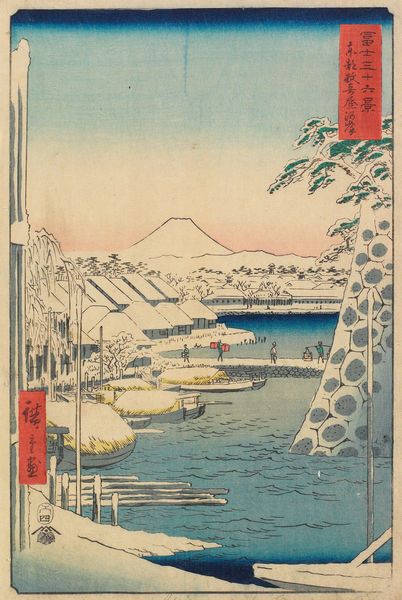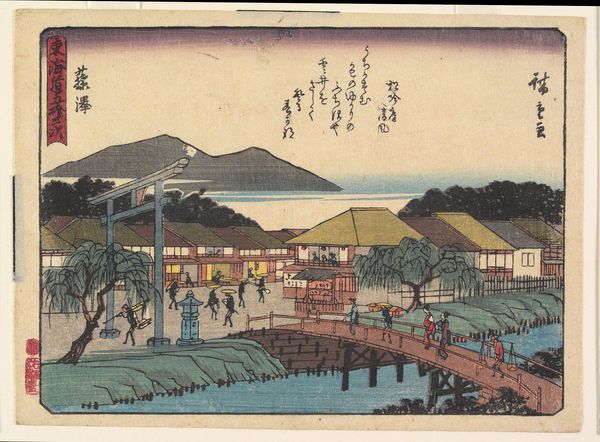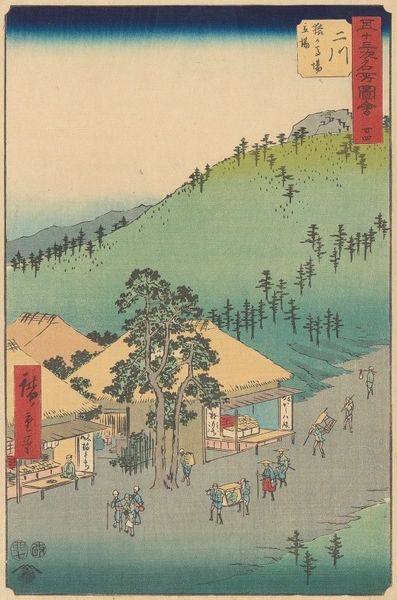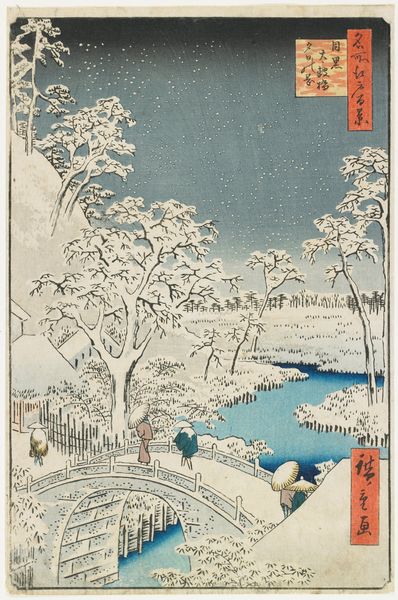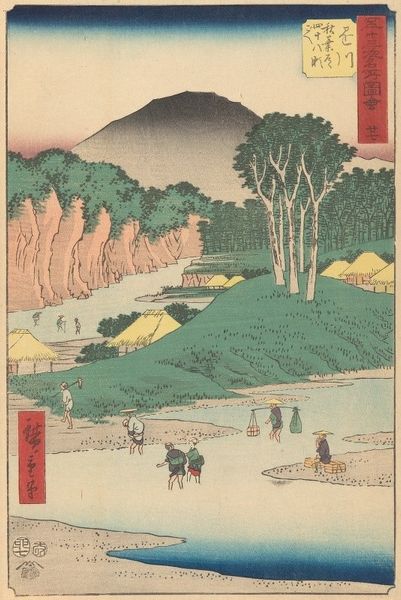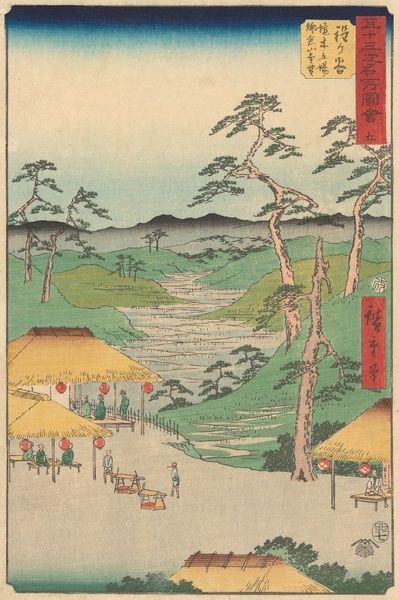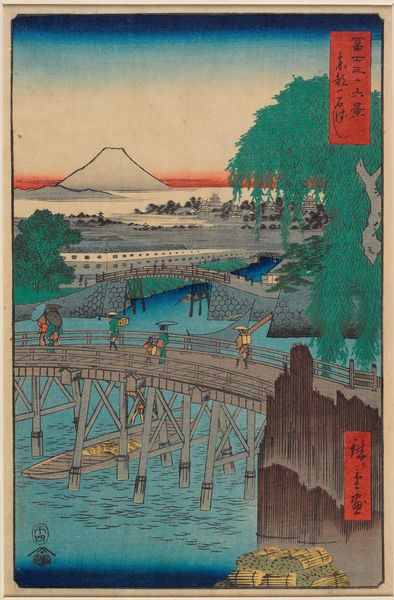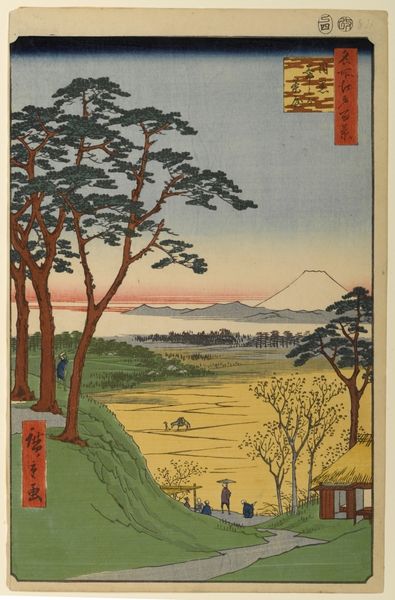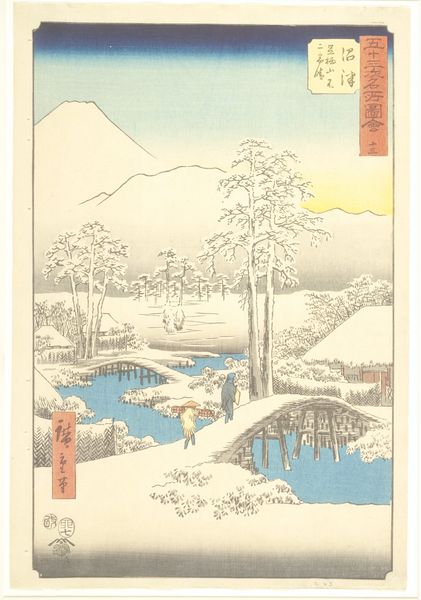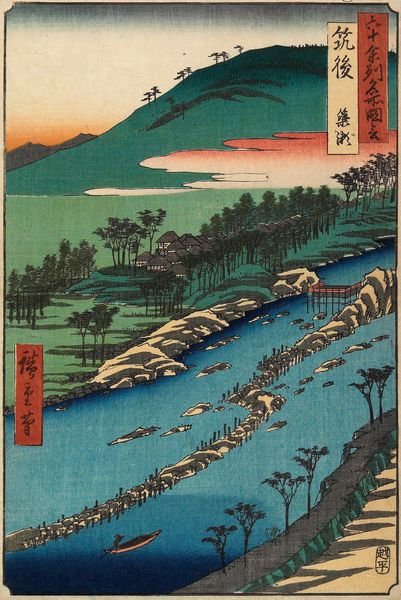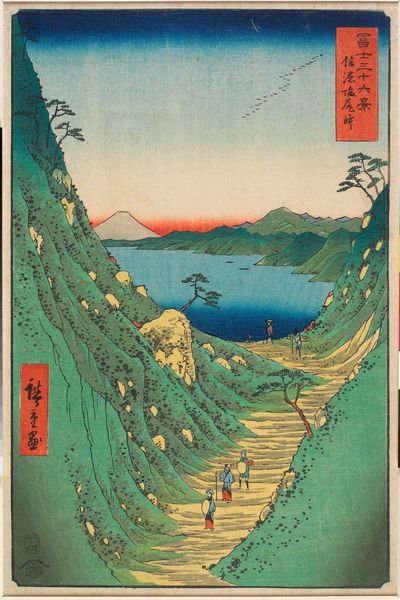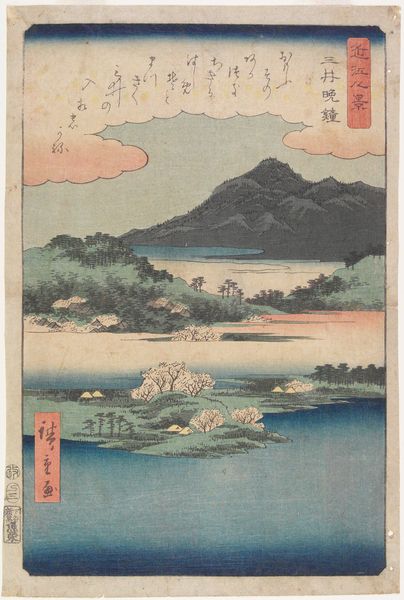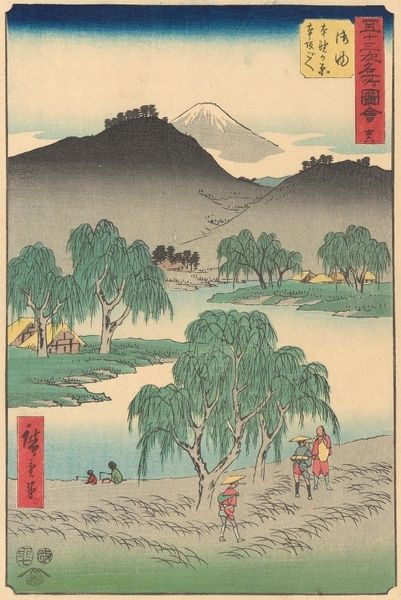
Riverbank at Sukiya in the Eastern Capital Possibly 1858
0:00
0:00
print, ink, woodblock-print
# print
#
landscape
#
ukiyo-e
#
ink
#
woodblock-print
#
cityscape
Dimensions: 14 × 9 1/4 in. (35.6 × 23.5 cm) (image, vertical ōban)
Copyright: Public Domain
Curator: Look at this striking woodblock print. This is "Riverbank at Sukiya in the Eastern Capital," possibly created around 1858 by Utagawa Hiroshige. The work captures a winter scene in Edo, now Tokyo. Editor: The cool blues and whites certainly give that wintery feel, but I'm also struck by the texture. You can almost feel the rough surfaces of the stone wall and the thatched roofs. What's most interesting is how these material details connect to a grander view of the mountain in the background. Curator: Exactly! The setting situates us within the lived experiences of Edo residents during the late Edo period. It brings forth themes of societal hierarchies and the significance of Mt. Fuji in Japanese culture. Notice how people, presumably merchants or laborers, traverse this landscape, their movements determined by the rhythms of the city itself. Editor: The figures certainly seem integral to the composition. Seeing these figures transporting materials speaks to the physical demands of working life during this time, what kind of materials, what kind of infrastructure were they engaged in? Curator: Consider also the ukiyo-e tradition, often interpreted as depicting a floating, transient world, focusing on pleasure districts and leisure activities. Hiroshige, however, weaves in the reality of labor, creating an intersectional view of Edo society beyond the stereotypical representations of the geisha or samurai. This challenges previous views and offers insights into how all levels of society participated in its evolving identity. Editor: This speaks to a tension between idealised landscapes and the realities of urban development and daily life, and even the tension with labor and its representation as artistic consumption for another consumer group. It definitely makes one question the purpose of production versus the beauty within. Curator: Yes, understanding Hiroshige’s choice of perspective – looking toward Mt. Fuji amidst a bustling working riverfront – creates an environment where societal classes and individual aspirations seemingly collide, making us think deeply about social structures and power relations within Japanese society at the time. Editor: Ultimately, examining the processes and the people making this reality allows for a more detailed understanding of class tensions between making a work versus artistic appreciation. It goes beyond an easy picturesque view. Curator: Definitely food for thought! I appreciate the depth it lends to the reading of this historic print. Editor: Likewise. The context you brought highlights previously unexplored points, offering multiple avenues for studying art as more than just visual aesthetics.
Comments
No comments
Be the first to comment and join the conversation on the ultimate creative platform.
